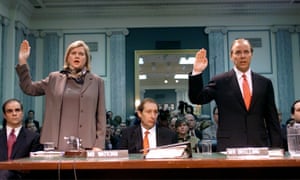In the libel suit he brought in 1878 against John Ruskin, the Victorian painter James McNeill Whistler was asked under cross-examination how he justified charging 200 guineas for a painting of a London firework display that took him two days to finish. “I ask it for the knowledge of a lifetime,” Whistler declared.
Investment bankers explain their bonuses in the same manner, although the rewards for mergers and acquisitions advisers are rather greater than for most painters. Goldman Sachs will be paid $58m by 21st Century Fox for its advice on Fox’s planned $71bn asset sale to Walt Disney (and the bank stands to gain another $47m for financing the remainder of Fox).
They are remarkable paydays — today’s dealmaking boom is the most rewarding time in history to be a global M&A banker. It is especially lucrative for those in the top league of advisers who run many auctions. An individual with the ability to shepherd nervous boards of directors past the pitfalls and a reputation for squeezing the best prices can name his or her fee.
But what exactly do they do for the money? When asked this question, they turn sheepish and talk vaguely about the art of persuasion rather than the science of valuation. The secret to a bulging “success fee” is less to obtain the best possible deal than to make the chief executive and the board believe they got it. That is not the same thing, particularly in the long term.
The M&A adviser’s job has three qualities that put its practitioners in a powerful bargaining position over their own pay. First, the stakes are very high. One former banker compares it to a surgeon explaining his or her charges as a patient is being wheeled into the operating theatre. The latter needs to have the best possible professional and is in no position to quibble.
Going through an M&A auction can feel like being operated upon for directors who have not experienced it before. Shareholders and the media lurk, ready to condemn any slip-up (the latter risk is why public relations consultants get paid so much as well). There is plenty of subterfuge and bargaining over details, any of which could unexpectedly prove fatal to the outcome.
Second, advisers are paid with other people’s money. That is especially true when a company is being sold — the overall price including the fees is going to be picked up by the acquirer, so what difference does a few million make? Even when the client is an acquirer, boards of directors whose personal reputations are at stake are not digging into their own pockets to pay.
Through one end of the telescope, the fees even look small. The average fee for selling a company worth between $10bn and $25bn is about 0.3 per cent, and can cover years of unpaid work. Bankers claim they are cheap compared with property brokers, who may charge several percentage points for selling a house. As ever, the best way to make money is to be around a lot of it.
Third, M&A advice is a black box. There is plenty of technical skill in structuring a transaction such as using acquisitions to change tax domiciles. That is bundled with access to the bank’s contacts with potential bidders in various countries and presented as a whole by one adviser to the board. The senior banker’s tone of voice conveys a mixture of financial advice, human judgment and comfort.
The last is the most valuable. In theory, M&A advice could be unbundled into different tasks, and more of the technical work done by machines, but boardrooms only have space for a few people. They are crowded enough by companies’ baffling habit of hiring several banks to advise on big deals and paying them $20m each, which one adviser calls “ludicrous”.
The fee rises exponentially for an adviser in the room where a deal happens. This accounts for the prosperity of advisory boutiques such as Centerview Partners and Evercore, founded by corporate financiers who built their reputations at banks including UBS and Lehman Brothers. The power of a global advisory elite is exemplified by tiny and highly rewarded banking “kiosks” such as Robey Warshaw.
Global investment banks sniff at the ability of a few experienced individuals to charge similar fees to them, without bearing the same costs. “The boutiques are full of guys cashing in at the end of their careers and they get a bit of a free ride,” says one adviser at a big bank. In the M&A business, relationships have enduring value.
But hiring the best cosmetic surgeon in the world does not make cosmetic surgery a good idea. Deals can be brilliantly executed at the time without adding to a company’s long-term value and many are unwound — often with the help of the same advisers — when a chief executive leaves. “Companies pay far too much to advisers. It’s really not worth it,” says Peter Zink Secher, co-author of The M&A Formula.
The success fees of advisers should be more closely tied to whether the deal succeeds long after it has closed and they have moved on to the next one. Whistler won his libel suit against Ruskin for having accused him of “flinging a pot of paint in the public’s face”, but was only awarded damages of a farthing. Even artists can push their luck.


